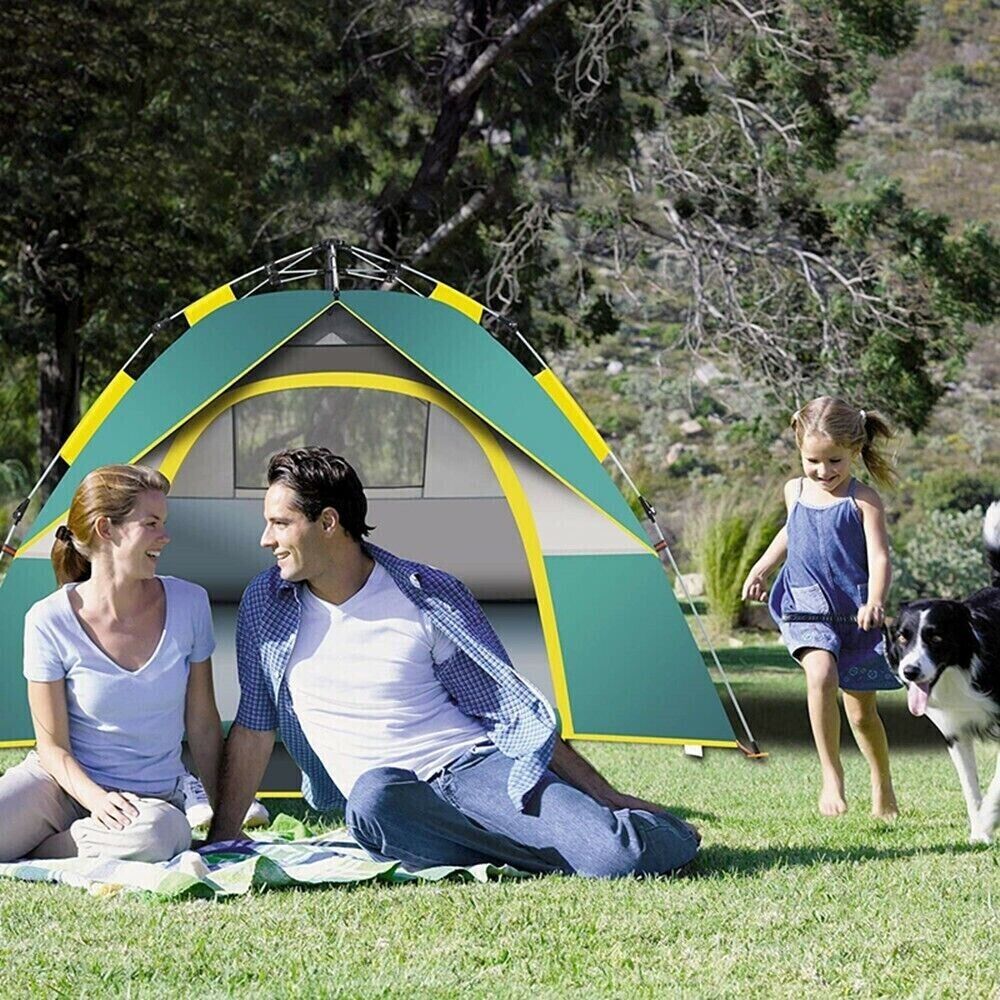Camping is a wonderful way to escape the hustle and bustle of everyday life and experience nature up close. But for many beginners, planning their first camping trip can seem overwhelming. What do you really need? What gear is essential? In this article, we'll discuss the 10 essential camping gear for beginners to ensure your first adventure in the wilderness is a success.

Introduction
Why camping is becoming increasingly popular
Camping has gained popularity in recent years, and for good reason. It offers an affordable way to spend time outdoors, relax, and explore new places. The connection to nature and the chance to escape from everyday life make camping an increasingly attractive recreational activity.
The importance of the right equipment
The success of a camping trip depends heavily on the gear you bring. Having the right supplies can ensure you're well-prepared to brave the elements, sleep comfortably, and enjoy your meals. It's not just about what you bring, but also how you use and care for it.

1. Tent
Choosing the right tent
The tent is the heart of your camping gear. It protects you from wind, rain, and cold and provides a private space to rest. For beginners, it's important to choose a tent that's easy to set up and suited to the weather conditions of your chosen campsite. Two-person tents are often a good choice because they're compact and lightweight, yet still offer ample space.
Care and maintenance of the tent
A well-maintained tent can last for many years. Make sure to clean your tent thoroughly after each use and let it dry completely before packing it away. Store it in a cool, dry place to prevent mold growth.

2. Sleeping bag
Different types of sleeping bags
Sleeping bags come in a variety of shapes, sizes, and materials. Mummy sleeping bags offer excellent thermal insulation and are ideal for cold nights. Blanket sleeping bags are roomier and offer more freedom of movement, but are more suitable for warmer conditions.
How to choose the right sleeping bag
When choosing a sleeping bag, consider the weather at your planned camping location and your own comfort needs. Pay attention to the temperature range the sleeping bag is designed for and decide whether you prefer synthetic or down filling.

3. Sleeping pad or air mattress
Differences between sleeping mat and air mattress
Sleeping pads are lightweight, compact, and provide solid insulation against the cold from the ground. Air mattresses , on the other hand, offer more comfort but are heavier and take up more space in your backpack. Both options have their advantages and disadvantages, and the choice depends on your personal comfort needs and the type of camping trip you're planning.
Tips to improve sleep comfort
For a restful sleep outdoors, it's important to choose a good-quality sleeping pad or air mattress. Make sure it's thick enough to compensate for uneven ground, and use an inflatable pillow or a rolled-up sweater as a headrest.

4. Camping stove
Types of camping stoves
Camping stoves come in a variety of designs, from gas stoves to multifunctional cooking systems. Gas stoves are ideal for beginners because they are easy to use and reliable. They allow you to quickly prepare a hot meal, which is especially beneficial on cold days.
Safety tips for using a camping stove
When using a camping stove, caution is advised. Always cook on a stable, level surface and never leave the stove unattended. Keep flammable materials away and ensure adequate ventilation when cooking near your tent.

5. Cookware
What should be included in a good camping cooking set?
A good camping cooking set should include at least a pot, a pan, and cutlery. Some sets also include useful extras like mugs, cutting boards, and spatulas. Make sure the cookware is lightweight and stackable to save space in your backpack.
Care and cleaning of camping cookware
Cleaning outdoor cookware can be challenging. Use biodegradable dish soap and be careful not to leave food residue in the wild. Clean dishes immediately after use to avoid attracting wildlife.

6. Flashlight or headlamp
Differences between flashlight and headlamp
A flashlight is an essential camping tool, but a headlamp can be even more convenient, allowing you to use your hands free. Headlamps are ideal for activities like setting up your tent in the dark or reading in the tent. Flashlights, on the other hand, provide focused illumination and are more versatile.
The best models for beginners
When choosing a headlamp, consider brightness, battery life, and water resistance. Beginners should opt for models that are easy to use and have a good battery life. Headlamps with adjustable light modes are especially useful.
7. First aid kit
Important contents of a first aid kit
A well-stocked first aid kit should include plasters, bandages, antiseptic wipes, painkillers, and tweezers. It's also advisable to include a first aid manual so you can act quickly in an emergency.
Why a first aid kit is essential
Accidents can happen at any time, especially in the wilderness. A first aid kit can be a lifesaver in an emergency. Whether it's a minor cut or a more serious injury, it's important to be prepared and able to act quickly.

8. Backpack
Choosing the right backpack for camping
The backpack is the central means of transport for all your gear. Make sure it offers enough space, is comfortable to wear, and has multiple compartments to keep your things well organized. A backpack with a capacity of 50 to 70 liters is often ideal for beginners.
Packing tips for beginners
When packing your backpack, place heavy items close to your back and lighter items higher up. Pack frequently used items, like snacks or a rain jacket, at the top or in the outer compartments for quick access.

9. Water bottle and water filter
The best water bottles for campers
A sturdy, reusable water bottle is a must-have for every camper. Make sure it's lightweight and easy to clean. Models with a built-in water filter offer additional protection if you need to draw water from natural sources.
Water filters: safety in the wilderness
A water filter is an important safety tool, especially when traveling to remote areas. It helps remove bacteria and other contaminants from the water, ensuring clean drinking water even if you rely on springs or rivers.

10. Weatherproof clothing
The importance of weatherproof clothing when camping
Weatherproof clothing protects you from rain, wind, and cold. It's crucial for staying warm and dry even in inclement weather. A good rain jacket and waterproof shoes are essential for any camping trip.
Which items of clothing are a must?
In addition to a rain jacket, a fleece jacket, long underwear, and a hat should also be included in your pack. These items will keep you warm and dry, even when the weather becomes unpredictable.
Conclusion
The importance of good preparation
Camping can be one of the most enjoyable leisure activities if you're well prepared. The right equipment will ensure you enjoy your adventure safely, comfortably, and relaxed.
The next step: Planning your first camping trip
Now that you know the basics, nothing stands in the way of your first camping trip. Plan carefully, pack wisely, and don't forget to respect nature. Happy camping!
FAQs
What camping equipment is essential for beginners?
A tent, a sleeping bag, a sleeping mat, a camping stove, cooking utensils, a headlamp, a first aid kit, a backpack, a water bottle and weatherproof clothing are essential for beginners.
How do I choose the right sleeping bag?
Consider the temperature range, the fill ( synthetic or down), and your own comfort needs. Choose a sleeping bag that's suited to the weather conditions at your campsite.
Is a first aid kit really necessary when camping?
Yes, a first aid kit is essential for immediate action in the event of an accident or injury. It can save lives.
Which type of camping stove is best for beginners?
A gas stove is ideal for beginners because it is easy to use, reliable and relatively light.
How can I make sure my tent is weatherproof?
Choose a tent with a waterproof outer shell and well-sealed seams. Make sure it's sturdy enough to withstand wind and rain.

